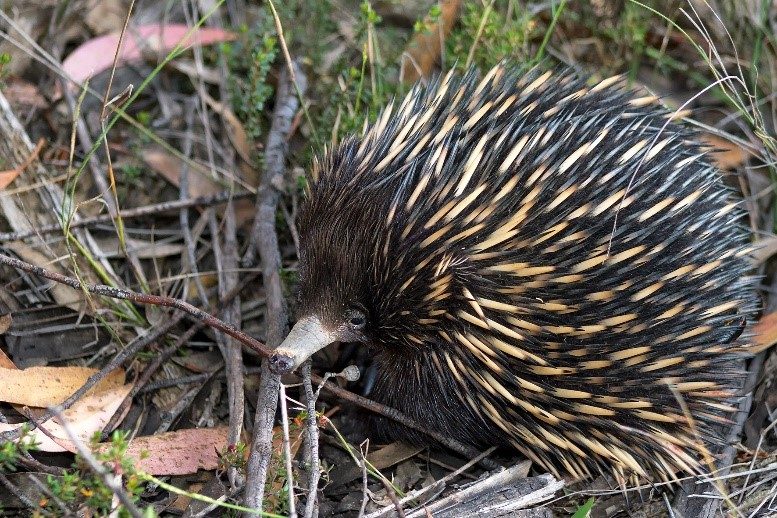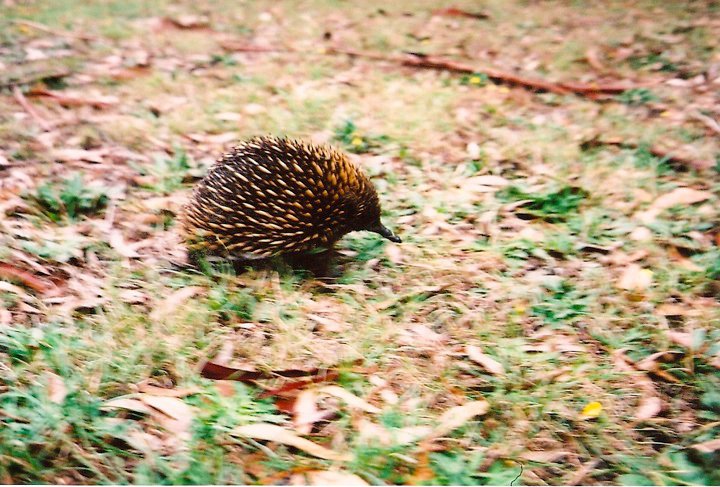
The short-beaked echidna. Image: Louise Docker
Echidnas are notoriously shy and difficult to see in the wild and even though they are one of our iconic Australian animals, we know very little about them. The team behind Echidna CSI want to change that.
Professor Frank Grützner’s research group at the School of Biological Sciences, University of Adelaide aims to identify echidna populations on mainland Australia and determine if, and why, they are under threat before taking steps to help their conservation.

Up to now, a study on mainland echidna populations was considered unfeasible due to the time and resources required to gather any meaningful field data over such a large area. Especially because echidnas are so cryptic – if you go out specifically to look for one, you’re guaranteed not to see any.
This is where the Atlas of Living Australia (ALA) can help. Using the ALA’s BioCollect as the back-end database and data management interface, University of Adelaide PhD student Alan Stenhouse developed a mobile app – Echidna CSI – for the Grützner research team. Using BioCollect saved the project team time and costs, and allows data to flow seamlessly into the ALA where it is stored, analysed and re-used. BioCollect helps the team to recruit members of the public (citizen scientists) to record echidna sightings and mail echidna scat samples to the research team, by making the project publically discoverable via the Australian citizen science project finder. This means large amounts of data can be collected across a huge area.
“We know just by speaking to the general public that echidnas are spotted quite frequently out in the wild or even in backyards, so a citizen science approach to gaining this kind of data is ideal,” said Tahlia Perry, PhD Student, University of Adelaide.
The Echidna CSI app allows people to make records wherever they are. It is easy to access and has a simple user interface. It is a good promotional hook to raise public awareness of the project and helps communication between the research team and their citizen science workforce.
Results so far
Since the launch of Echidna CSI in September 2017, over 1500 people have registered through the mobile app. Over 850 submissions (including approximately 80 scat samples) have been received from contributors across all states and territories. Several submissions are uploaded every day.

You can run, but you can’t hide (from citizen scientists)! Image: Eliza Keck
Out of the total 750 submissions, approximately 665 (78%) have been submitted on the Echidna CSI mobile app and 185 (22%) have been made directly through the BioCollect website.
ALA and Echidna CSI
“ALA is not only useful for data submission. It really helps us to look at what data is coming in. I am a very visual person, so being able to see all the data on a web interface is incredibly useful. I can view the photos that come through and verify sightings instantly. The map allows me to look at where data submissions are coming from and I can filter my data through ALA even before downloading it for analysis. This means I don’t need to be a computer scientist to visualise and understand the data coming in, which I am very grateful for.” Tahlia Perry, PhD Student, University of Adelaide.
Download the Echidna CSI app here – Android and Apple
This blog originally appeared on The Atlas of Living Australia website. Read the original article here.


2nd March 2022 at 4:45 pm
Just seen one just out of Port fairy Victoria
10th January 2022 at 6:31 pm
We have one that’s been wandering around the back yard for the last week. Today it has burrowed under the wire fence to go next door. Certainly got our small dogs curious. This is in Beaconsfield Upper, Vic. Last week one was crossing the road in Beaconsfield
10th December 2021 at 5:14 pm
I saw 2 today near the Nobbies on Phillip Island. I drove past and couldn’t stop so no photo. There would be more reports if a photo wasn’t required. They are quite common on the island.
9th August 2021 at 10:40 am
App wouldn’t uploaded pic. Website is an utter disaster from a user perspective. These studies are great but fall down with government organised technology, just wasted 30 minutes of my work day and won’t bother again.
5th November 2018 at 1:01 pm
Just submitted photo to ALA of blonde echidna in Tolmie Vic. Seen lots of echidnas in this locality over the years but never one of these. Is this a one-off genetic mutation like albinos, or is it a sub-species? I read that they have been seen in Flinders island and a couple of other places, but not sure how common in Victoria.